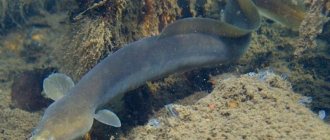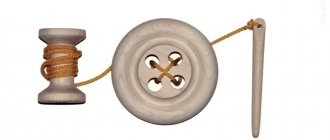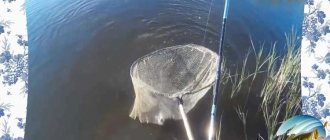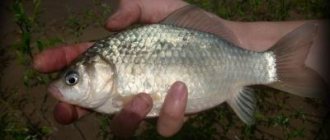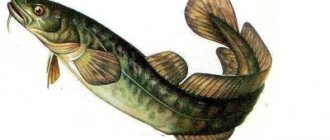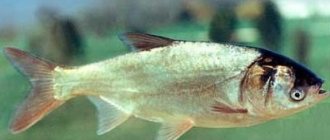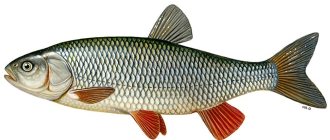Eel habitats
This fish prefers deep-sea places with a clay bottom or soil, avoiding rocky and sandy places.
In summer, it can live in the water between reeds and sedges, closer to the muddy shore. It can often be found in a pool near the shore, or on hot days it can hide under coastal trees and stones.
It is best to note that it chooses warm waters, prefers places where the water is stagnant and there are no strong currents, with sharp and rocky riffles.
Features of behavior
The eel is a very rare species of fish, although it is not so picky about the conditions of its habitat - it can often be found in lakes or ponds, rivers and other artificial reservoirs. The main thing is that the latter have a muddy bottom, in which these predators burrow and hibernate.
Although the type of soil for it is not so important - it feels great on a sandy bottom and small pebbles, nevertheless, as noted above, it is the muddy bottom that is optimal. At least it is in the silt that it buries itself for the winter in a state close to hibernation.
Note! During the season of heavy rains, it can crawl from one body of water to another without much effort. It lives at depth, where there are natural shelters - snags or burrows, vegetation. This river predator mostly hunts at night, which is worth considering when choosing a fishing time.
When to catch eels?
Fishing for this predator begins in early spring and continues until late autumn. The optimal time for catching eels is at night, when they are most active and go hunting. Although it is possible to catch an eel during the daytime, this is rather an exception to the rule.
And in this regard, it is worth making a certain clarification - in the daytime, this predator can be caught for the most part after the last one comes out of hibernation, when it is hungry and does not particularly overeat with food.
Good to know! This predator is considered heat-loving and therefore the bite is intense in those months when the water warms up well and the eel can even approach the shore. At the first cold snap and frost, the eel can fall into a state of suspended animation - hibernation, burrowing into the muddy bottoms.
Where are eels found?
The appearance of the eel is remarkable: it has a long body covered with small scales. Color ranges from dark green to black with a light belly. The small head has a protruding lower jaw. The entire oral cavity is covered with small and sharp teeth. The average size of an individual rarely exceeds a kilogram, but under good conditions the fish reaches two meters in length and 4 kg in weight.
Features of behavior
The eel is a rather rare species, but is not picky about its habitat conditions. It can be found in ponds, lakes, rivers, and reservoirs. The type of soil is not important; it adapts perfectly to both silt and sand. During the rainy season, it easily crawls from one body of water to another. It lives at any depth, the main thing is that there are natural shelters nearby: snags, burrows, vegetation. At night, a predator (and the eel is one) goes out into shallow water in search of prey.
Diet and spawning
It is difficult to get a bite, since several catches of this species during fishing are considered success. However, catching an eel is an unforgettable experience, because it is not like any other species. The diet consists of eggs of other fish, fry, crustaceans, worms, small underwater animals, and snails.
To learn more:
What does the predatory fish pike bite on?
Before spawning, the species migrates, and it does not matter where it is standing at the moment - the flock begins to move into the Sargasso Sea. Eel spawning occurs in only one place on the planet. After spawning, the fish dies, and the hatched fry returns to fresh water bodies.
The depth in the place where the eel spawns reaches 400 meters, and the water temperature is 16-18°C.
Best time for fishing
The eel is considered heat-loving and begins to bite in the spring. It reaches its peak of activity in the summer. The bite continues until the weather gets colder, and at the first frost the fish goes into suspended animation, so winter ice fishing for eels is impossible. They usually go to the trophy in the evening, after sunset. Since it is active at night, the bite subsides at dawn.
In inclement or cloudy weather, you can wait for a bite during the day, although you are more likely to encounter a trophy at night. Experienced fishermen know how to catch an eel during the day: they should lower the bait near its usual habitats, such as holes, snags, flooded trees and other shelters.
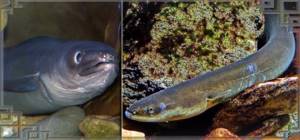
What to catch eel with - choice of bait
It is the right choice of bait for catching eels that can significantly determine the entire outcome of the fishing itself. In practice, there are many baits that the predator itself can bite on.
Animal bait
Eels can be caught using peas and pieces of cheese, but there are baits that can be used to catch eels more effectively:
- Crawling and earthworm.
- Live bait - this can be bleak or loach, or other narrow-bodied fish.
- Pieces of fish and shellfish, as well as snails.
It is best to take an earthworm for bait, which is placed entirely on the hook. If the earthworms are not large, they attach 2-3 whole worms, and it is with this kind of bait that you can get a good catch.
Important! Since this fish has a very well developed sense of smell, when choosing bait, choose those that do not have a specific smell.
Artificial bait
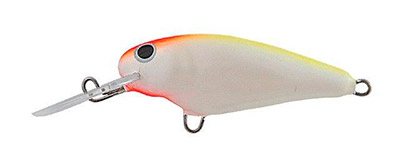
When catching eels, you can use fish pellets as artificial bait, which are put on a hook and attached to it with a hair. The main thing to remember is that you put no more than 15 mm on the hook, and the hair should be strong and short.
When catching predators, you can also use special wobblers - most often the following brands are used for night eel fishing:
- Dorado Invader 7S and
- Liberty BITE 130F.
- Liberty Deep Runner 800F.
- Salmo Perch P08SDR
- HALCO Sorcerer 125.
All of them have an excellent, sweeping game, but provided that the leash is even and not so fast.
Eel fishing
- VK
The body of the eel is elongated, serpentine, more or less rounded in the front part, and laterally compressed from the anus to the tail. Covered with a layer of thick mucus, which makes it very slippery. The dorsal, caudal and subcaudal fins form a ribbon-like border that covers more than half the length of the fish. The rays of all fins are protected by skin. The pectoral fins are wide but short. Pelvic fins are absent. The scales are very small, almost hidden in the skin, extending to the head and fins.
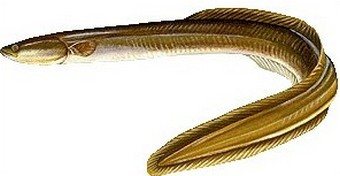
Content:
- HABITAT
- WHAT DOES THE EEL EAT?
- CHOOSING A FISHING PLACE
- WHAT AND WHAT TO FISH WITH
The head is small, conical, somewhat flattened. It gradually passes into the torso; it can be distinguished from the latter only by the gill slits. The eyes are located above the corners of the mouth, small. The lower jaw protrudes forward and upward. The lips are fleshy. The jaws and other bones of the mouth contain numerous small teeth.
The color of eels changes with age and depends on the nature of the body of water in which they live, as well as the individual characteristics of each individual. Eels that have not reached sexual maturity have a dark green or dark brown, sometimes black, back color. The sides are painted yellow in various shades. The belly is yellow or white. Adult rolling eels have a dark brown or black back, grayish white sides, and a white belly. Their body seems to have a metallic sheen, which is why such eels are sometimes called silver eels.
HABITAT
Eel is an unpretentious fish. Can live in various types of reservoirs. According to its lifestyle, it can be classified as a nocturnal bottom fish. During the day, more is found in the ground than above the ground. The eel's habitat changes with age. In the first years of life in fresh water, young individuals stay mainly in the coastal zone overgrown with vegetation. They do not burrow deep into the ground like adult fish. As they get older, eels move from the coastal zone to deeper, muddy, often littered areas of the reservoir and can burrow into the ground to a depth of 80 cm. At night, they colonize the entire water area of the reservoir, entering both the coastal zone and thickets of aquatic plants, but places with a hard rocky bottom are avoided. Eels move snake-like, relatively slowly. When in danger, they quickly bury themselves in the mud or hide in various shelters.
In humid places they can live for a long time without water. They are able to move on grass, especially on dew or after rain, and even on wet gravel or cobblestones, but on land they move short distances.
The common eel is most often found in water bodies of the Baltic Sea basin. It penetrates through channels into other basins. Its glassy larvae invade lakes and ponds. On the territory of Ukraine, eels can be found in the lower reaches of the Danube and Southern Bug, in the Dnieper basin, but most often in the lakes of the Pripyat and Western Bug basins.
In the lakes of the Volyn and Rivne regions, eels reach a length of 80-100 cm, and their weight is often 2.5-3 kg. In the waters of Belarus there are eels up to 115 cm long and weighing up to 3 kg. Males are smaller than females. Their length does not exceed 50 cm, and their weight is 250 g.
WHAT DOES THE EEL EAT?
Eels feed only in warm weather, mainly at night. During the day, they burrow into the ground, sticking only their heads out. With the onset of frost, they stop feeding until spring. In the intestines of eels you can find worms, leeches, mollusks, mayfly larvae, dragonflies, caddis flies, higher crayfish and fish (perch, ruffe, spined loach, rudd, roach, bleak, etc.). The composition of eel food and the predominance of certain animals in it depends on the age of the fish, the presence of these organisms and the season of the year.
CHOOSING A FISHING PLACE
The choice of location is the main issue in eel fishing. For the last five years, my friends and I have been consistently catching one or two eels per night on donkeys, which we place in one hole located near the shore at the exit from a small nameless bay of Lake Seliger. Moreover, there are decent individuals there - weighing 1.2–1.7 kg. We usually put a medium-sized crawler on the hook. The eel may not take a bait that is too large due to its small mouth. The depths there are from 8 to 12 m. The dump begins immediately after the narrow coastal table. The soil is soft, hilly, mostly clayey-silty. The bite in this place continues, as a rule, until the beginning of October.
The eel cannot tolerate extraneous sounds, stays away from the route of motor boats and prefers mostly stagnant water. In autumn, these are, as a rule, deep, 5–12-meter holes with a small amount of silt. Often the eel makes a hole for itself in the area of the edges or chooses a bumpy bottom, since it is more convenient for it to hunt here.
It is curious that in summer the habitat of the eel, like that of other predators, largely depends on the thermocline. During very hot periods, this fish can often be found in coastal waters, where depths do not exceed 2 m. Then it moves to the area of shallow snags, makes holes in the silted roots of algae, and takes a liking to loose, bumpy waters. Here, active eel biting can be observed in the early hours of the hot summer.
WHAT AND WHAT TO FISH WITH
If there are warm, windless days in the fall, you can count on active eel biting. But it feeds mainly at night and only sometimes goes out during the day in cloudy weather. At this time, it is caught with mugs, using bait at the very bottom, various types of donks, nets and fishing rods from a boat, as well as floating girders.
The main fishing line for any type of gear mentioned above, except, perhaps, a fishing rod, should be taken with a diameter of 0.4–0.45 mm, and leashes - 0.3–0.32 mm with a length of 30 to 50 cm. A sinker for an anchored circle and donkeys cast in the shape of a spoon work well. Its weight must be at least 100 g. To avoid strong twisting, the leashes are attached through a swivel. Hooks No. 6–10.
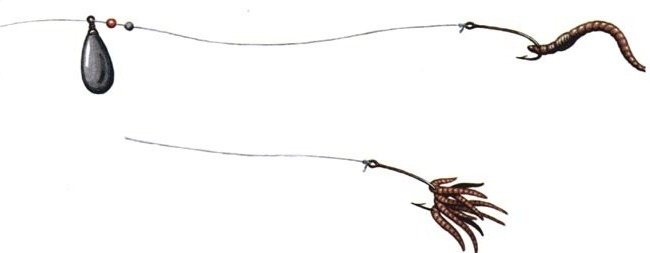
When fishing from a boat with a fishing rod, the main line is taken with a diameter of 0.3 mm, the leads - 0.28 mm. You should choose a fishing rod equipped with rings and a reel. Float - with a carrying capacity of 4 to 12, and sometimes more, grams, depending on fishing conditions. The “olive” sinker lies at the bottom. In principle, if there is no strong current or wind, the weight of the sinker can be equal to the carrying capacity of the float and be in a suspended position. It is important that the bait does not drag along the bottom too quickly. You can use two leashes in the rig. They are tied to a swivel below the sinker and moved to the side using a rocker arm. Another option is when one leash is installed after the sinker, and the other above it. Baited hooks should touch the bottom.
The eel is very shy, so it is important to remain as quiet as possible.
The eel’s lifestyle is such that it sits in the mud all day, and with the onset of dusk until the morning it begins to move in search of food. The eel is carnivorous; it willingly devours small frogs, fry, dead fish, mollusks, worms, lampreys, snails, crustaceans and other aquatic life. The eel's bite in the initial stage is marked by the trembling of the bell or float, but when the eel has already grabbed the bait, a confident pull follows. This is where you need to make the cut.
Related articles:
Fishing for bream on the “Ring”
Fishing for bream from a boat
Donka fishing from a boat
Minnow fishing
Eel fishing gear
It is best to catch this predator using a fishing rod - you choose it at your own discretion, since the eel is not so picky. The main thing that a fisherman should remember is to choose the optimal spinning rod and a medium-sized hook and line, but we’ll talk about this later.
Rod
It should be strong and have a sensitive tip, and most importantly the sinker itself should not be heavy - you are not supposed to cast too far. So you can choose a rod with a length from 2 to 4 meters; it is best to choose spinning rod types, feeder or picker rods.
Coil
You should choose a spinning reel with a sufficient supply of fishing line - as a rule, it is optimal if there are 150-200 meters of the latter on it. The main thing is that the clutch must be strong and have precise settings when waiting for a bite, as well as for fishing the hunter.
Important! Experienced fishermen put marks near the clutch so that they can change the settings at a crucial moment.
fishing line
When hunting this predator, it is worth remembering that it has sharp teeth and can easily bite through a thin fishing line made of hair or silk.
Therefore, they choose a fishing line with a cross-section of at least 0.2 - 0.35 mm, but it is not recommended to use a thicker line, so as not to alert this fish. And although it’s impossible to call an eel shy, you shouldn’t take a thicker fishing line.
Hooks, sinkers
Since the eel’s mouth is small in size, it is accordingly worth choosing a small-caliber hook for fishing. Accordingly, for eel fishing, you should choose a hook number 7 or 8, the rod of which is cast thick and straight. You can also catch eels with a hook with a large shank; some anglers take double or triple hooks.
Fishing methods and bait
In addition to gear, things such as a flashlight, fireflies, a tent and warm clothes will be useful. The bait should be prepared in advance, because the predator is quite picky in this matter. Experienced fishermen know what to use to catch eels:
- fish love a bunch of red worms or a crawl;
- live bait or pieces of fish;
- vegetable baits (peas, corn, beans), as well as cheese;
- boiled or raw crayfish neck;
- leeches and insect larvae;
- chopped pieces of meat;
- shellfish and snails.
The size of the bait should match the fish's mouth. The hook must be hidden, since the victim can get stuck and run away.
Donk fishing
The eel is a strong contender. When bitten, its sinuous body allows it to quickly hide in snags, entangling the tackle. Therefore, anglers prefer more reliable rods and lines, for example, a feeder with a high upper test limit. Carp fish are also perfect, but this is a last resort, for truly trophy specimens. The stick is equipped with a powerful spinning-type carp reel. The fishing line is replaced by a braided thread, which with a smaller diameter can withstand high loads.
To learn more:
Tench: description of fish, habitats, spawning and fishing methods
Depending on where the fishing takes place, sinkers are selected: in the current they are used weighing up to 100 g, and in still waters - up to 50 g. A 30-centimeter leash with a single hook is tied below. The fish have a small mouth, the use of double or triple models will reduce the effectiveness, increasing the number of landings.
When making a hook, it is necessary to force the landing, since the enemy will crawl into cover if the opportunity arises. There must be a grip at hand; without it, it is impossible to take slippery prey.
Application of the running donkey
As in the first case, the rod must be powerful. For this fishing method, a plug-in spinning rod of 2-2.5 m with a cast of up to 50 g is suitable. Fishing can take place both from the shore and from a boat. The installation of the equipment differs from the usual donkey only in the location of the leashes with hooks. In this case they are located above the sinker. After casting and lowering the tackle to the bottom, the angler gradually tightens the tackle with the help of a reel, giving a pause of several minutes every couple of turns. Thus, one wiring lasts up to 15 minutes.
A fish bite can be felt in your hand, and can also be seen at the tip of the spinning rod. There will be cliffs in snags, so the use of a running bottom is permissible if the bottom is clean or the fisherman knows the body of water thoroughly.
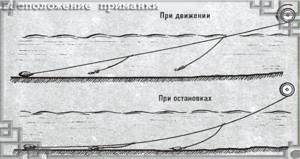
Plumb fishing
The most common places where eels live are holes with a lot of rocks and sunken trees. It is not advisable to fish at such a point with a bottom from the shore - constant snags and cliffs will interfere with the enjoyment of fishing. It is best to use a boat and, having anchored, start fishing vertically. To do this, you will need a small spinning rod or a side with a miniature spinning reel, a spool size of up to 1000 units. The spinners used are small, so perch models are suitable. In vertical fishing, heavy jigs with a worm or other bait are also used. The advantage of this method is that it catches fish in difficult areas. Since the density of eel at such points is high, the bite is better.
To learn more:
Pike perch: habits of sea and river species
Fishing with a "needle"
The method is classified as “old-fashioned”; it is not practiced in modern fishing. The gear consists of a long stick, thick fishing line, needle and bait. A monofilament thread with a needle on which a worm is attached is attached to the end of the stick in a loop. The bait is lowered in front of the eel's hole. When biting, the needle gets stuck in the victim’s mouth, and the fisherman calmly pulls out the prey.
The method is not aesthetically pleasing and causes irreparable damage to the fish, so it is considered forgotten. It is practiced only in villages where fishing is still a way of obtaining food.
For the modern fisherman, unity with nature and respect for underwater inhabitants come to the fore, so the caught trophies are often released.
Using a rod with a float
Structurally, the tackle resembles a Bolognese fishing rod, but it is better to use it shorter and with a higher test. The floats must be sliding, because fishing is carried out at a decent distance from the shore. Unlike donkeys, the tackle is used in still water, and a float with a high antenna serves as a bite alarm. The advantage of the rig is that the bait can be suspended in the water column above the cover, where a regular bottom will snag. After the bite, you need to let the fish swallow the bait and only then hook it. A large worm is used as bait to discourage bites from small fish.
Methods of catching eel
Experienced fishermen catch it in the following ways:
- For a snack.
- To the donk.
- On the float.
If you fish from the shore, you can use a picker or a spinning rod, which is equipped for bottom fishing, with a feeder. Also remember that at night a considerable catch will be obtained by using backlighting and an electronic bite signal.
Let's celebrate! Traditional bait is crawling or earthworms, but according to some fishermen, smelt, which smells like fresh cucumbers, especially attracts eels.
Reviews from fishermen
Last year we caught eels using a flounder type of bait - a particular rarity in Crimea, and most likely it was not a sea species, but a river species. It was almost a meter long, weighed 2.5 kilos - the meat tasted very tender, but in my opinion a little fatty. Although everything here is not for everyone - if you smoke it, it will be just right. Now I will know where to catch such beauty. Grade:
Kostya
I would like to advise all fishermen that eels are found both in the Northern Dvina and on Lake Onega - I have been fishing there for 5 years now, changing places. I caught it with a wobbler and spinning rod. In general, although my catch is not large, the process of hunting this predator in the form of a snake is a pleasure. This is a kind of hunting for underwater snakes - both in essence and in its principle. I even saw one of my friends pull an eel out of the water with his hands - quite a sight. Grade:
Igor
This year I was in Karelia with a friend - that’s where we caught eels, or more precisely, it was in Syamozero. We also caught them with bloodworms in the late evening, putting several pieces on the hook. My first eel is almost a meter long, weighing 1.8 kilos. We fried it, but smoked the rest - very tasty and tender meat. Grade:
Nikolai
From my own experience, I can say that in the North of Russia you can catch anything, but eel is difficult to catch there. However, my husband and I are avid fishermen and every spring we go fishing for eels. We caught a little near Lake Ladoga, but it was an unforgettable catch - I even saw an eel crawling across the wet grass from one backwater to another. At first I was confused, but after I warmed it with a shovel, I even felt a little sorry, but when they cooked fish soup out of it, it was something incredibly tasty.
Grade:
Svetlana
I will say from my own experience that I caught eel in Thailand, in the morning in the vicinity of Pattaya - I had to hire a local guide who knows where this fish is found. They caught it in rice fields, in shallow water. How they took a dead bat, but the third time they used a live toad. As a result, my catch amounted to almost two dozen eels. Grade:
Oleg
Let's celebrate! Eel is a very unique fish, somewhat unpleasant in appearance, reminiscent of a snake, but amazing in its taste. This is a bottom-dwelling fish, a nocturnal predator, which is not so easy to catch on a hook, but if you master all the basics of catching it, you will have a lot of fun.
